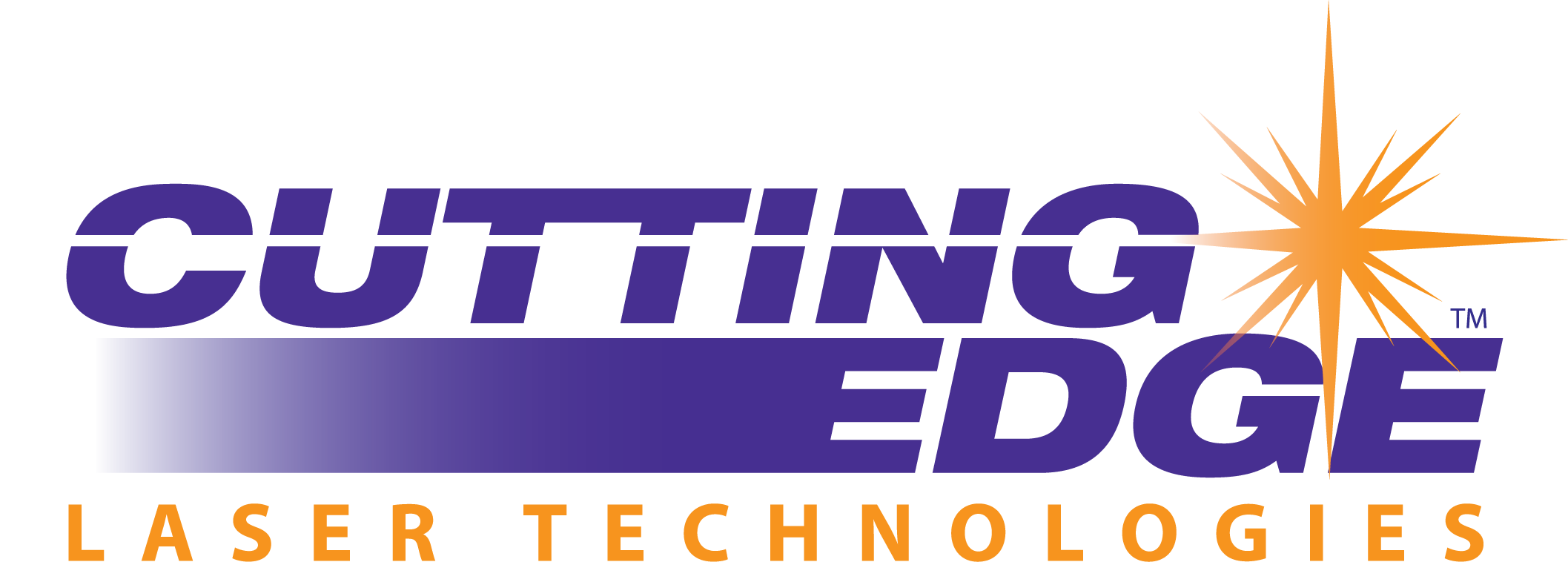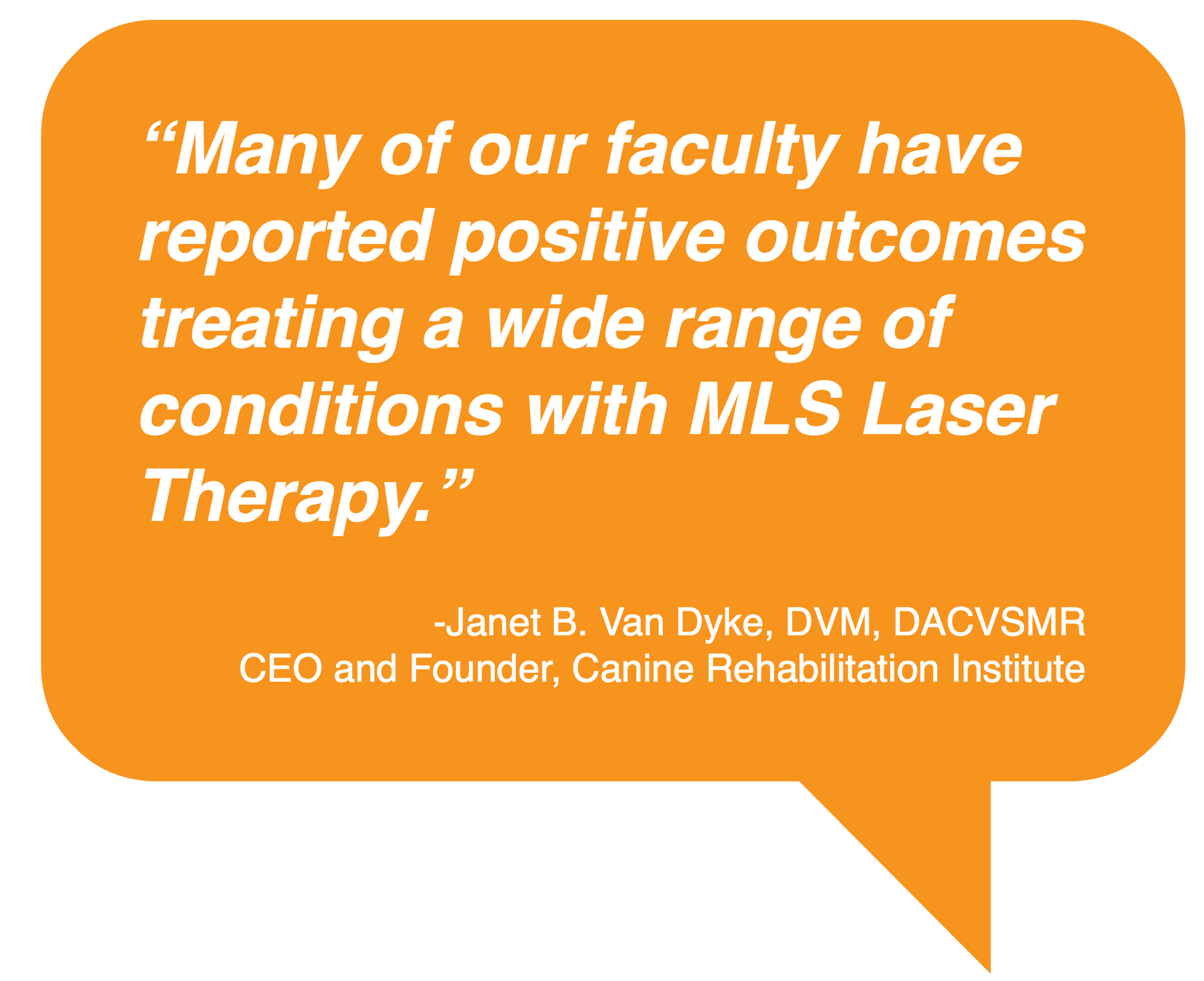Presented by Dr. Laurie McCauley, DVM, DACVSMR, CVA, CVC
Dr. McCauley condenses and summarizes more than 12, published, clinical studies on laser therapy as it relates to modern day veterinary medicine.
During this recorded webinar, Dr. McCauley summarized and reviews more than 14 current, published clinical studies regarding the efficacy of laser therapy for tendon issues, pain, nerve damage, inflammation, wounds and more.
About Laurie McCauley, DVM, DACVSMR, CVA, CVC
 Dr. McCauley graduated in 1992 from Colorado State SVM. After six years in general practice, she became a pioneer in the field of Veterinary Rehabilitation, designing the first underwater treadmill for dogs. Dr. McCauley started the first Rehabilitation Clinic in 1998 and has been on faculty at Canine Rehabilitation Institute since 2004. She is certified in Acupuncture and Chiropractic therapy and in 2014 became Board Certified in Canine Sports Medicine and Rehabilitation. Dr. McCauley is an International lecturer and contributing author in many textbooks and journals. She was awarded the 2011 Iams AARV Award of Excellence in the Field of Rehabilitation and the 2015 AHVMA Holistic Practitioner of the Year Award.
Dr. McCauley graduated in 1992 from Colorado State SVM. After six years in general practice, she became a pioneer in the field of Veterinary Rehabilitation, designing the first underwater treadmill for dogs. Dr. McCauley started the first Rehabilitation Clinic in 1998 and has been on faculty at Canine Rehabilitation Institute since 2004. She is certified in Acupuncture and Chiropractic therapy and in 2014 became Board Certified in Canine Sports Medicine and Rehabilitation. Dr. McCauley is an International lecturer and contributing author in many textbooks and journals. She was awarded the 2011 Iams AARV Award of Excellence in the Field of Rehabilitation and the 2015 AHVMA Holistic Practitioner of the Year Award.
Sorry! This webinar is no longer available, however, below you can find links to all abstracts sited in the webinar.
Want to Learn More About the Cases Reviewed?
Download the abstracts here.
Webinar Q&A with Dr. McCauley
Q: Do you recommend laser therapy during dental procedures? If so, what protocol do you use?
A: Any extraction would benefit from laser therapy intraorally after the procedure. This will speed healing of the gums and bone underneath as well as be part of your pain management protocol. After the patient is awake, laser can be used for pain management and speeding healing by treating through the gum if the patient is not comfortable allowing access intraorally.
Q: When I took CRI classes, 3B lasers were for human and class 4 was for canine. Has there been a change recently that allows use of class 4 for people?
A: Class 3 and Class 4 is determined by the power. Both can be used for animals and humans. Cutting Edge makes lasers for both human and animal conditions. I have two clients that are Natropaths that saw what laser did for their pets and bought the human machine for their practice and use it every day with excellent results. Different species (canine, human, equine, reptile…) require different amounts of energy for similar tissue changes.
Q: Could you please comment on the variations on the laser devices that were used in these studies (power, wavelength, etc)? Also, several of these studies were not blinded or randomized (such as the Drapper 2012 study on dogs).
A: Unfortunately, many studies do not have all of the variables listed and so it can be difficult to compare them. Each study is a piece of information, certainly studies that are double blinded and randomized carry more weight then those that are not. Also, can we extrapolate results on lab animals or other species to dogs? Could tissue effects perhaps be different in our species?
We can take the information we gather from one species and use it as a starting point for other species. I do not treat horses, yet I understand from horse vets that they require significantly less energy to treat them for the same condition in a canine patient. I know Cutting Edge has recommendations on their machines for dog and cats, reptiles, birds, small mammals, and horses.
Q: Is there significant use of Class 4 lasers in human medicine?
A: Many Orthopedic Surgeons, Podiatrists, Chiropractors, Naturopaths, and more healthcare professionals currently use laser therapy; it is becoming more widely used and accepted in human medicine as the demand from patients for non surgical, non pharmaceutical options is increasing as a result of the current opiod epidemic. Cutting Edge has FDA approved Lasers you can check them out here if you're interested.
Q: Do you have problems using laser on black haired/dark skinned animals?
A: I always try to part the hair. If you are using a *heating laser, high powered class 4 laser, you can cause overheating of the tissue. For these lasers, wetting the hair and tissue decreases the chance of thermal damage. There is more reflection, the water absorbs some of the energy, and it is a cooling agent.
*** MLS Therapy Laser is not a heating laser uses a patented technology that prevents collateral tissue damage, even on dark haired/skinned animals.
Q: Are there any studies that show that the increased bone formation in the rat study equates to good bone strength or was it just a histopath study with no strength testing?
A: This study looked at histopathology, not tensile strength.
Q: What is the different between a 650nm "aiming" beam vs a 980nm "therapeutic" beam? Is there a difference is how each is delivered?
A: The difference is the wavelength 650nm vs 980nm and most likely the power. The 650nm "aiming beam" on the Cutting Edge Laser is 50mW, as this wavelength is absorbed by melanin and hemoglobin, it's effect is superficial. If too much energy were applied, it would heat the tissue. The 980nm wavelength has more penetration then the 650nm wavelength, but significantly less then the 905nm or 808nm wavelength that Cutting Edge uses. The 650nm wavelength is continuous on the Cutting Edge laser. Laser companies that use a 980nm wavelength use a duty cycle, meaning that the laser is on some of the time and off some of the time. You would have to check with the company using the 980nm wavelength for it's duty cycle for each frequency.
Q: Is laser safe to laser over the plate directly for TPLOs or just the soft tissues?
A: I recommend very low doses over the plate, specifically to treat the skin. If you have multiple wavelengths, something in the 600nm range has been shown to be best for skin. On the lateral aspect I recommend higher doses and wavelengths to treat deeper tissue to help the bone heal.
Q: What is the difference between point-to-point and continuous laser?
A: Some lasers can only be used in a scanning technique as they generate heat if motion is stopped. Some laser companies recommend keeping the laser in one place to deliver a specific amount of energy before moving the probe. Some lasers have the ability to use both techniques, Cutting Edge Lasers is one of these.
Q: Is it safe to use laser post pop injections? Creating an inflammatory response ... then reducing it?
A: It is recommended to wait to treat with laser, but I have not seen any studies one way or the other. I would ask on the Vet Rehab list serve that question to the people that do the regenerative medicine what they recommend and why.
Q: Is it possible to laser "too much"? We will sometimes laser hospitalized cases daily for several weeks and always wonder if we are over doing it? Thanks... and I should specify these are usually post op CCL sx and post-op IVDD dogs
A: Yes, you can over do it. I have had my finger in the scatter from a external glass diode laser years ago (on a daily basis) and if I get to close to a beam now, it tingles in an uncomfortable way. I have also had two clients that were medical professionals that when they saw the response we had with the laser bought one for home use and over used it on the pet. Both pets shy away from the laser now. We don't know the ramifications of this yet, hopefully we will understand it better in the future. With a class 3 or Class 4 laser I would only laser daily for a few days, and then spread it out. There have been some studies showing better results with less energy and multiple treatments compared to a higher single dose and another study showing better results with every other day vs daily treatment.
Q: Hi Dr. McCauley, why is it that the lower joules are having a better effect than the higher doses? Past laser CEs that I've attended really pushed the fact that we can't necessarily over laser... but some of these studies seem to contradict that..
A: When looking at total Joules, you also have to look at wavelengths. Some wavelengths need to have significantly higher joules to have penetration to the target tissue. 904/905nm wavelength need the least amount of energy followed by wavelengths in the 800nm range, and then the most energy is needed to have effect is wavelengths in the 970-980nm wavelengths. Also, the Cutting Edge research I presented at the end showed that by having multiple wavelengths treating the tissue at the same time, as compared to treating the tissue with one wavelength and then a second wavelength, or just one wavelength, showed significantly better results in treating pain.
Q: Do you recommend laser therapy for IVDD patients, where the owner cannot afford surgery?
A: If surgery is not an option, acupuncture is my first therapy recommended followed by laser.

